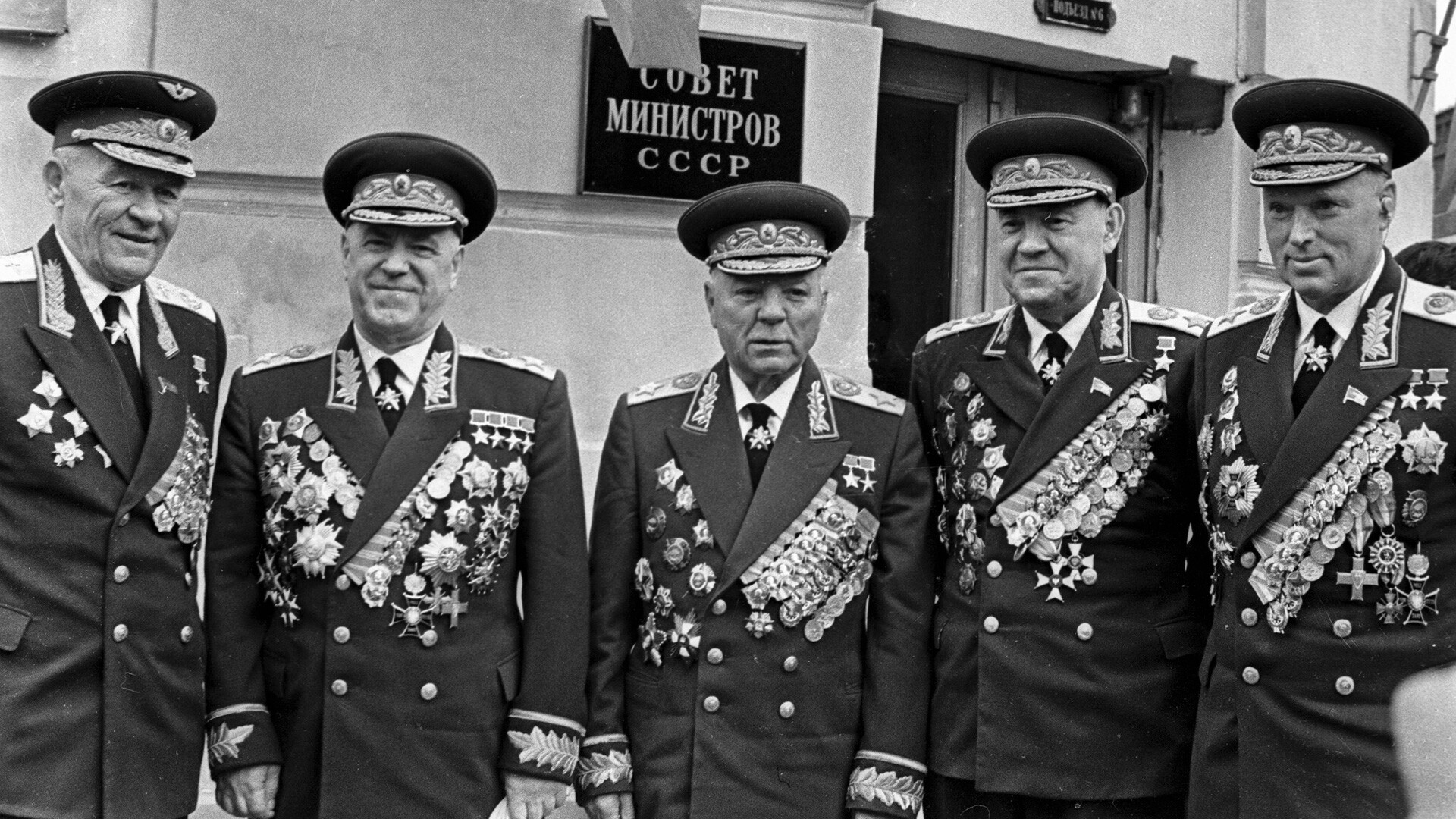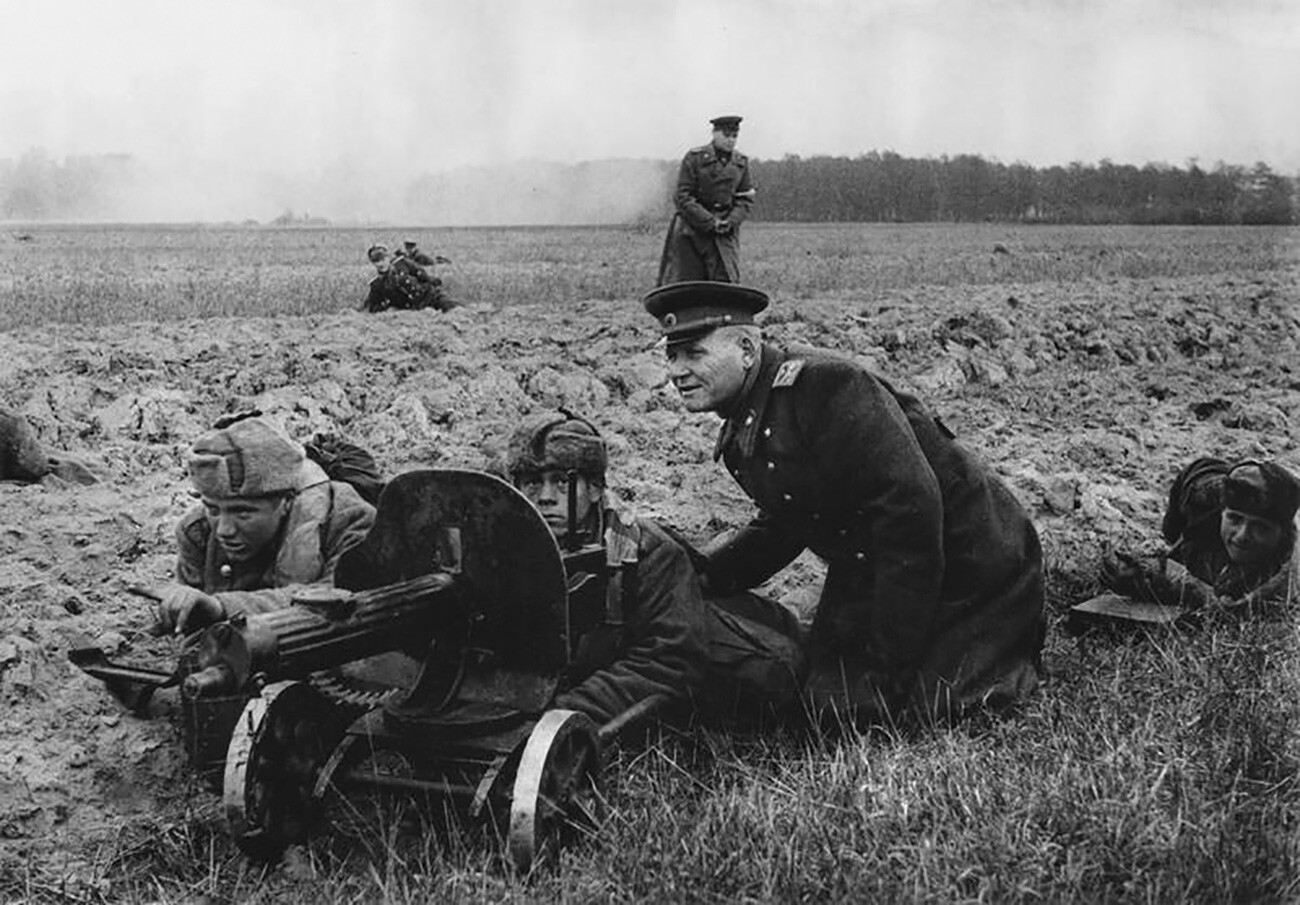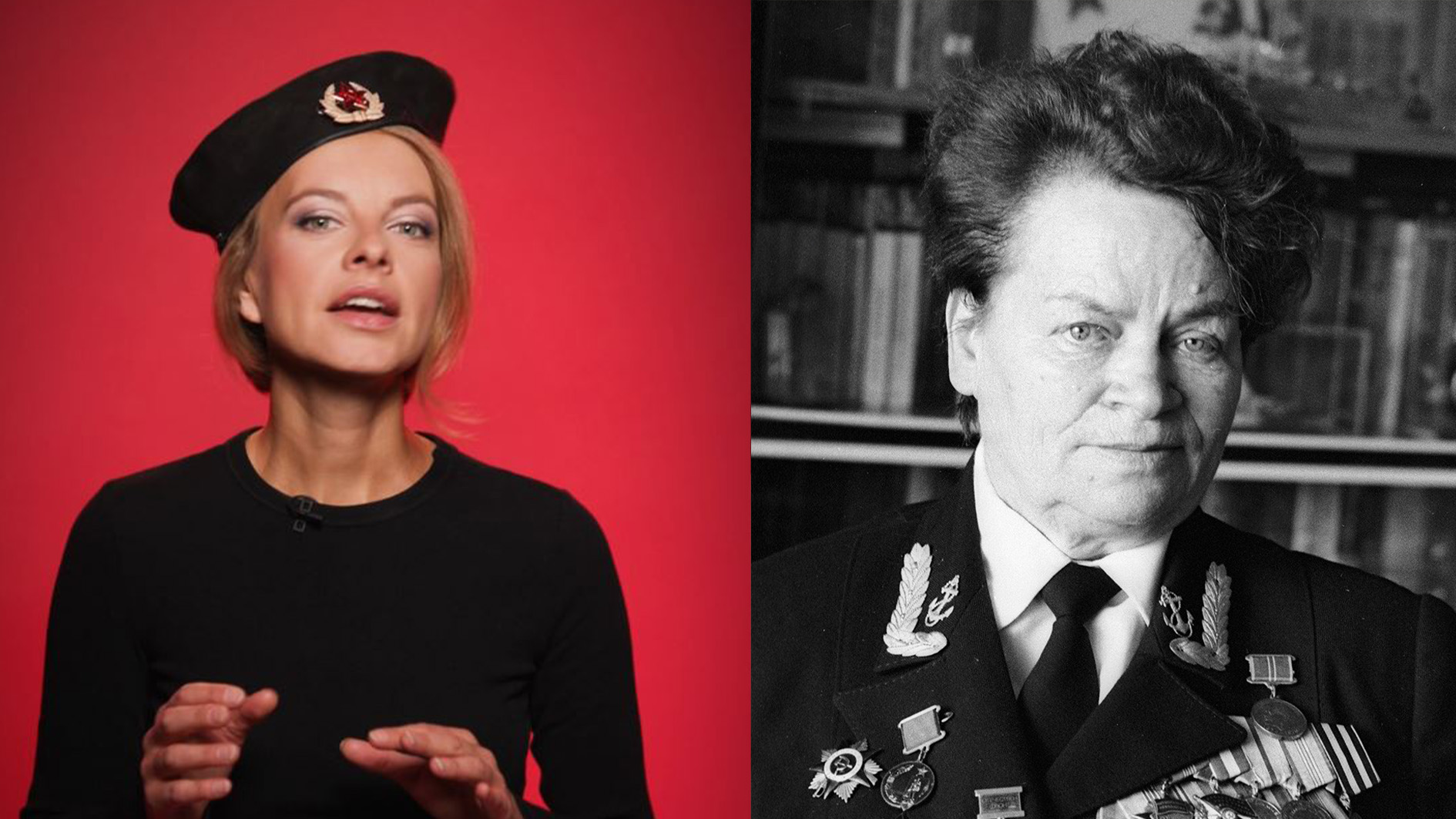
10 interesting facts about Soviet Marshals you (probably) didn’t know

1. Voroshilov is considered the first Marshal of the Soviet Union, although this rank was awarded to four more military commanders at the same time as him.

On November 20, 1935, five commanders of the Red Army (Semyon Budyonny, Kliment Voroshilov, Alexander Yegorov, Mikhail Tukhachevsky and Vasily Blyukher) were simultaneously awarded the highest military rank (at the time) for the first time in Soviet history – Marshal of the Soviet Union.
All of them became Marshals at the same time, but, in the public consciousness, Kliment Voroshilov was considered the first. “And the first Marshal will lead us into battle!” a popular Soviet song said about him.
Voroshilov possessed a much stronger influence than other military commanders. He didn’t just occupy the position of the People’s Commissar (Minister) for Defense, but also had been a close friend of Stalin himself since the times of the Russian Civil War. The Soviet leader highly appreciated Kliment’s diligence and personal loyalty.
2. Tukhachevsky was the youngest Marshal of the Soviet Union.

At the moment of acquiring the highest military rank, Mikhail Tukhachevsky was 42 years old, which made him the youngest Marshal of the Soviet Union.
Formally, there were younger Marshals. Alexander Golovanov became a Marshal of Air Forces at 39 years of age, while Ivan Peresypkin became a Marshal of Signal Corps at the same age. However, these Marshals of different army branches or special forces corresponded to the combined arms rank of Army General.
3. In his youth, Malinovsky fought in the French ‘Army of Africa’.

Corporal Rodion Malinovsky ended up in France in the Spring of 1916. He arrived there as part of the Russian Expeditionary Corps, sent by Emperor Nicholas II to help his ally. After the revolutionary events of 1917, the corps had been disbanded.
Malinovsky continued to fight the Germans on the Western Front in the ranks of the ‘Honorary Russian Legion’. This formation was a part of the 1st Moroccan Division, which was a part of the so-called French ‘Army of Africa’. Usually stationed in Algeria, Morocco and Tunisia, it was involved in military action in Europe.
The future Marshal distinguished himself during the breach of the ‘Hindenburg Line’ in Fall 1918, for which he was awarded the French Croix de Guerre with a silver star. After the end of the war, he returned to Russia.
4. Govorov fought against the Bolsheviks during the Russian Civil War.

In 1918, when Russia was suffering through the Civil War, Leonid Govorov lived in the small town of Yelabuga, not far from Kazan. Artillery School and a short service in the Russian Imperial Army were behind him; from the latter, he was decommissioned with the military rank of ‘praporshchik’ (non-commissioned officer).
In September, Govorov joined the White Guard, which occupied the town. Leonid himself later claimed that he was mobilized by them.
For almost a year, the future Marshal fought in the 8th Kama Rifle Division of the Western Separate Army, where he commanded an artillery battery. With a decree from July 13, 1919, Supreme Commander Admiral Alexander Kolchak promoted him to the rank of ‘podporuchik’ (second lieutenant).
However, when, in November-December of 1919, the White Guard forces suffered a heavy loss in the East of the country and began to roll over beyond the Ural Mountains, Govorov decided to switch sides and join the Red Army.
5. Rokossovsky was the only Soviet Marshal who was also a Marshal of Poland.

“I’m the most unhappy Marshal of the Soviet Union. In Russia, I was considered a Pole, in Poland – a Russian,” Konstantin Rokossovsky, a native of Warsaw, lamented, a son of a Polish worker and a Russian teacher, who became one of the best military commanders of World War II.
After the Victory, the Marshal commanded the Northern Group of Soviet troops, positioned on the territory of Poland. In October 1949, on request of the president of the Polish People’s Republic, Bolesław Bierut, and with the permission of the USSR authorities, Rokossovsky took the position of Minister of National Defense. The same year, he was awarded the rank of Marshal of Poland.
6. Timoshenko became a relative of Stalin, but was not at all happy about it.

In 1945, Marshal of the Soviet Union Semyon Timoshenko vehemently opposed the marriage of his daughter Yekaterina and Joseph Stalin’s son Vasily. He was convinced that such an alliance would bring nothing but trouble.
Vasily was known to drink a lot and lead a dissolute life and wasn’t even divorced from his first wife at the time. Nonetheless, the daughter of the Marshal ignored his prohibition and, in breach of all formalities, married her beloved.
Joseph Stalin approved of his son’s choice, but, as future events showed, Timoshenko was right in the end. The life of the spouses soon turned into a true nightmare, full of cheating, drinking, fighting and violence. After just a couple of years, Vasily and Yekaterina separated.
7. A type of hat and a breed of horses were named in honor of Budyonny.

Semyon Budyonny was one of the main heroes of the Russian Civil War. A daring cavalryman, he commanded the 1st Cavalry Army, which became the most powerful and famed military unit in the Armed Forces of the young Soviet Republic.
The word ‘budyonnovets’ was associated with bravery and courage; a military winter hat in the shape of an ancient Russian warrior helmet was unofficially dubbed ‘budyonovka’.
After the end of World War II, Budyonny occupied the position of Deputy Minister of Agriculture of the USSR in horse breeding and wrote more than 70 works in this field. Under his editorship, a monumental five-volume work titled ‘The History of the Horse’ was published. In 1948, a horse breed was successfully created in the Soviet Union and named ‘Budyonny horse’ in honor of the Marshal.
8. Although it was Zhukov who took Berlin, it was not him who finished off Nazi Germany.

In the morning of May 2, 1945, the remains of the Berlin garrison surrendered to the troops of the 1st Byelorussian Front of Marshal Georgy Zhukov. The hard and bloody battle for the capital of the Third Reich had ended with the victory of the USSR. However, capturing the “lair of the Fascist beast” didn’t at all mean the immediate end to the war.
The command which took charge of the Third Reich after Hitler’s suicide was still in possession of a 900,000-strong army on the territory of Czechoslovakia, which was trying to break westward and surrender to the Allies.
The main role in finishing the opponent off was played by the troops of the 1st Ukrainian Front of Marshal Ivan Konev. During the Prague offensive (from May 6 to May 11), the remains of Army Group Center and Army Group South were routed for good; almost 806,000 German soldiers were taken prisoner and the territory of Czechoslovakia was fully liberated.
In his memoirs titled ‘Forty Five’, Konev wrote: “When I visited Olšany Cemetery in Prague, where the ashes of our soldiers and officers rest, who died during the Prague offensive, I read with grief the date ‘9th of May’ on tombstones adorned with flowers. In essence, the war had already ended, but these people died here, on the outskirts of Prague, when our entire country was already celebrating victory; they fell in the last battles with the enemy, fearlessly finishing what we started.”
9. Kulik was the only Soviet Marshal who was demoted during World War II.

Marshal Grigory Kulik’s participation in the war against Nazi Germany turned into a spree of resounding failures. “With bitter sadness, I remember this man,” Marshal Alexander Vasilevsky wrote in his memoirs. “At the beginning of the war, he was unsuccessful in fulfilling the orders of Stavka in the West, then he was as bad in commanding one of the armies near Leningrad. Due to his negative personal qualities, he didn’t enjoy any respect among the troops and was unable to direct their actions in an organized fashion.”
In Fall 1941, Kulik was sent to Kerch and Rostov-on-Don as a representative of the Stavka of the Supreme High Command, with the order to defend them with every effort. However, both cities were lost.
As a result, on February 19, 1942, Kulik was demoted to the rank of Major General. In a limited fashion, he was still involved in military operations; however, he couldn’t achieve any visible results. The commander was restored to his military rank of Marshal only posthumously in 1957.
10. Only two people in all of history became ‘Heroes of the Soviet Union’ four times. Both of them were Marshals.

It was a great honor to become a ‘Hero of the Soviet Union’ in the USSR. Many were given this award twice and even three times, but only two people managed to receive it four times.
The first among them was Marshal Georgy Zhukov, considered the best commander of the Red Army in World War II. The second man was state leader Leonid Brezhnev, who received the rank of Marshal in 1976.
Apart from that, Brezhnev became the oldest Marshal of the Soviet Union at the moment of receiving the rank. He was 69.












